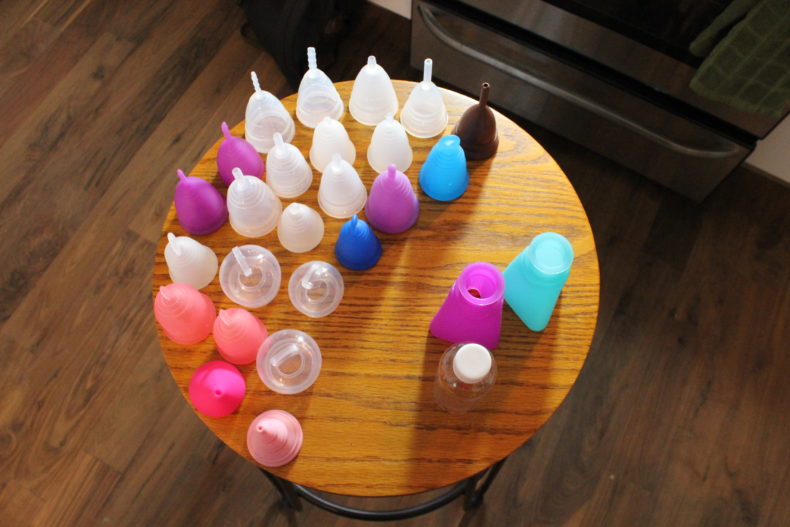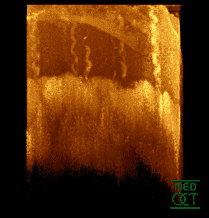
Friends of mine know that I’m full of weird, mostly bad business ideas. There was the science tattoo consultant service, to help fact check your tattoo before you put the wrong DNA sequence on your body. There was the Brooklyn dog running company, that would go for runs with your dog. There was the proposal to retrofit all the cabs in New York City with my bike-alert system. (For the record, if you would like to invest in any of these businesses let me know I am still accepting offers.)
And now I am here to present to you my latest idea: custom, personalized, 3D printed menstrual cups. Hear me out.
I just wrote a very, very long review of menstrual cups for The Sweethome. Seriously it’s 10,000 words long. And it’s so long because it’s actually really hard to figure out what “the best” looks like for a menstrual cup. And that’s in part because menstrual cups go in vaginas, and vaginas come in a variety of shapes and sizes. So for some people, one cup might fit just right, and for other people that cup might be far too big or too small. Yes, it’s like Goldilocks and the Three Bears, but with vaginas.
Inevitably when I write or talk about this, the first question people have is: okay, so how do I tell the shape of my vagina? That’s a great question, and it’s a hard one to ask. We’ve already covered the fact that it’s really hard to actually study the shape and size of the human vagina. Vaginas are flexible, stretchy and ever-changing. Which makes their dimensions, even at the single-human level, harder to pin down.
But there are ways to try and figure out what your vaginal shape is. In our earlier post we talked about one of them: taking a plaster mold. But it’s 2016, we can now use some more high-tech methods.
One way to do it would be an ultrasound, to get a general picture of what the vagina looks like. Doctors have used ultrasounds to look at the dimension of vaginas before, and this seems like a clear application.
 Another method that’s out there is called “optical coherence tomography,” which has been used to quantify the size and shape of the human stomach and esophagus. Optical coherence tomography works using near-infrared light, and can actually create cross sections of tissues. The GIF spinning to the left of this text is a cross section of a fingerprint using optical coherence tomography. The method has been used on vaginas before, in studies looking at how different microbicides impact cervical tissue. But you could, in theory, use this to see what’s going on under the surface of the vaginal walls. Is the muscle toned and right there? Or is it softer and stretchier?
Another method that’s out there is called “optical coherence tomography,” which has been used to quantify the size and shape of the human stomach and esophagus. Optical coherence tomography works using near-infrared light, and can actually create cross sections of tissues. The GIF spinning to the left of this text is a cross section of a fingerprint using optical coherence tomography. The method has been used on vaginas before, in studies looking at how different microbicides impact cervical tissue. But you could, in theory, use this to see what’s going on under the surface of the vaginal walls. Is the muscle toned and right there? Or is it softer and stretchier?
The challenge, really, is how this future-company is going to get these images of the vagina. There are home ultrasound machines, but they’re not cheap. And optical coherence tomography is even more complicated. But, since I’m making this up really, we could mail clients a little portable measuring device, so they can measure their size in the comfort of their own homes. They send us the files, and we would then take the images of the internal structure, and design a totally bespoke, custom menstrual cup guaranteed to fit.
As far as printing the cup goes, that part is the easiest. 3D printers are getting cheaper and cheaper, and they can now print with medical grade silicone.
So, what do you say very rich people who read LWON. Think I’m ready for Shark Tank? Would you like to invest? Great, I’ll take all your money.
I don’t exactly have VC-level funding to offer, but I would back this on Kickstarter any day of the month. Feature request: if a customer buys a cup, then rearranges her internal anatomy by giving birth, could a discount be offered on the second (or third) cup?